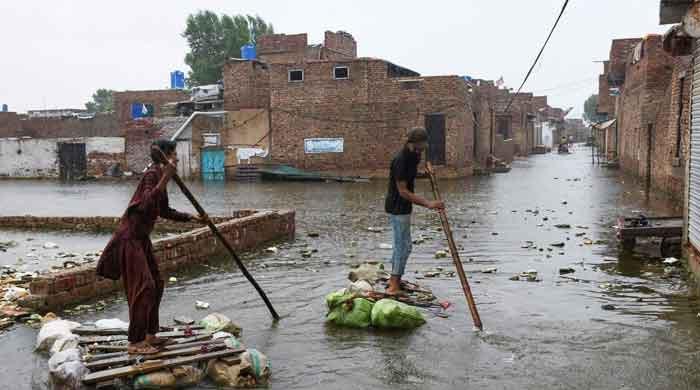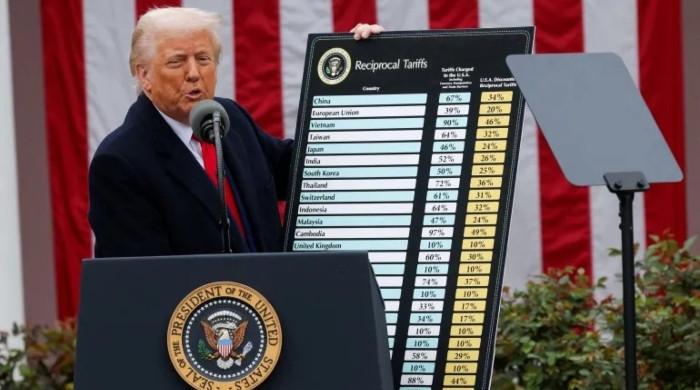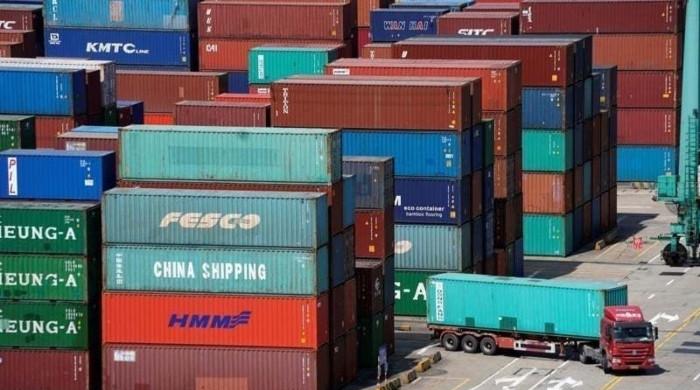Americans in town
The day Washington develops the sense that Pakistan is not doing enough to meet its requirements, the gushing compliments will become bad language and even worse behaviour
October 16, 2017
The visit of the interagency delegation from the US to Pakistan following the meeting between Prime Minister Shahid Khaqan Abbasi and US Vice President Mike Pence in New York last month, and Foreign Minister Khawaja Asif’s official visit, can qualify as a headway of sorts.
The visit looks particularly promising considering the superbly fortuitous culmination of the Canadian-American family’s five-year-old hostage ordeal. This happened on the very day the US delegation was meeting Pakistani officials in Islamabad. What a coincidence! What good luck! Usually, only imaginative fiction produces such wonderful outcomes. That regardless, the release/ rescue/freedom of the hostages (whose central character, Joshua Boyle, the Canadian husband, has very dicey, Al-Qaeda oriented history) removed a major immediate irritant in Pakistan-US relations, produced good vibes and mutual compliments all around. So the talks happened in the right kind of environment – which is good news in light of the bad blood of the past few months. So the ball is rolling. But which way is it going?
These talks were the first and preparatory round of what the Americans suggest is their last best effort to ram home the message to Islamabad that the failure of this engagement will have grim consequences. The high point of this phase of talks will be likely visits of US secretaries of state and defence (Rex Tillerson and James Mattis) in the coming weeks. It is in the course of these visits that it will become clearer what ground the Trump Administration is rooting its Pakistan policy on.
Some of the contours of what the immediate future holds for these talks are already known. These are best illustrated in a report, released earlier this year, by a bunch of think tanks. The report was co-written by Lisa Curtis, the lady who headed the interagency delegation, and Husain Haqqani, Pakistan’s ex-ambassador, once a darling of the country’s establishment who has now turned its visceral critic.
The report would have carried little practical-life weight if Ms Lisa had not become a top adviser to Trump on South Asia. Her views and biases now are the shaping influence on how the White House perceives Pakistan and what the Trump Administration considers the right buttons to push when it comes to dealing with Islamabad. She is now the deputy assistant to the president and senior director for South and Central Asia at the National Security Council.
In summary, the report is a window into the thought process Washington will be using to push its interests with regard to Islamabad and the strategies it will pursue to achieve these goals. The thrust of the thought process is primarily on arm-twisting, pressure-mounting and lengthening the shadow of punitive actions every step of the way. There is little evidence to suggest that soft-handling is what Washington is aiming at when it comes to ‘changing Pakistan’s behaviour.’
This was in part the reason President Trump referred to Pakistan without naming it in a rather distasteful way while partially announcing the breakthrough in the release of the Canadian-American family. ‘The big news from a country that did not respect the United States but has now started to respect it’ comment typifies a boastful man’s undying love for loudness, but more profoundly it underlined the view Washington takes of the way forward with Pakistan – through coercion and tough public posturing.
This is exactly what the Lisa-Haqqani report recommends. It criticises the Obama Administration’s policy of “coaxing” Pakistan into changing its policies through the incentive of elevated ties. It builds the case against Pakistan’s alleged ties with the Afghan Taliban, including the Haqqani Network, and shines the light of policy attention on Kashmir-focussed groups. The report is big on the issue of safe havens and ominously mentions Pakistan’s expanding tactical nuclear capability in the same breath in which it mentions terrorists groups.
The range of coercive actions the report recommends start from avoiding the depiction of Pakistan as an ally to the possibility of designating it a country sponsoring terrorism besides imposing a travel ban on important decision-makers in Pakistan to the US. In between, there are several other steps. It also speaks of lists of actions Pakistan has to take to dismantle alleged sanctuaries and support structures to militant groups.
Of course, the report is not a policy blueprint that the Trump Administration is bound to follow nor is its narrative open to question and contradiction. It is also theoretical postulation to assume that Pakistan has no power to counteract and cancel out the impact of the recommended strategy. Yet, in essence, the report does lay bare the predominant trends of Washington’s current thinking about Pakistan. Most of these trends are unfriendly and hostile and couched in the language of threats. They vote for a top-down position in negotiations rather than laying the table of talks on the even ground of mutual appreciation of each other’s position.
This means that events like the release of the Canadian-American family are important signposts on a spiral of demands and to-do lists that the Trump Administration already has handy. The coming visits can unfurl this list rather quickly and produce tight situations for Pakistan in terms of its responses. The issue of sanctuaries will be one of these many demands as will be Kashmir-focussed groups that Washington alleges cause as much damage to regional stability as those that operate in Afghanistan.
More importantly, since formal engagement has begun in the form of structured talks, the scope for beating around the bush – which is generally available in the case of press statements and media talks – will be much reduced. Formal talks are a point-by-point conversation and are predicated on the assumption that there will be concrete certifiable outcomes, failures included.
Washington has already listed certifiable outcomes. It is engaging with Pakistan not to ‘discover’ what can be discussed but has a predetermined diplomatic mindset to get ‘delivery’ on outcomes, some of which are listed in the report cited above. Washington is moving with pre-conceived notions, for instance about peace in Afghanistan. Here it is looking for a story of triumph rather than the sort of reconciliation that Pakistan hopes to achieve by integrating the fighters into a broad-based political process. Washington is not interested in playing mediator in Kashmir to the peril of its ties with India and has little time for the context in which Kashmir-focused groups operate – something Islamabad always tries to press home.
The notion that Pakistan backs militant groups within is deeply ingrained in Washington’s outlook on Pakistan, even though we deny every time the charge is made. These are vast differences to bridge on the negotiating table and look set to challenge the form and substance of Washington-Islamabad interaction in the coming months.
While the Foreign Office is correct in designating the first round of this engagement as “constructive and fruitful”, its statement is over-simplistic in suggesting that “terrorism is a common enemy and all countries need to work together and cooperate with each other to eradicate this menace”. There is no commonality in how Washington defines terrorism and its sources, the road to peace in Afghanistan and regional stability, and how Islamabad looks at these issues. There is little reason to express happiness over the Trump Administration’s compliments and tweets on Pakistan’s efforts simply because these are conditional upon meeting the criteria the US has set for assessing progress.
The day Washington develops the sense that Pakistan is not doing enough to meet its requirements, the gushing compliments will become bad language and even worse behaviour. Washington is looking for compliance, not cooperation. Its interest is in proving that Trump’s coercion works where Obama’s coaxing failed. The road ahead for Pakistan diplomatic engagement with Washington is rough, tough, steep and bumpy. We will only see this reality if we are able to take time off from our present preoccupation with mortally wounding each other at home and making ourselves a complete laughing stock of the world.
The writer is former executive editor of The News and a senior journalist with Geo TV.
Email: [email protected]
Twitter: @TalatHussain12
Originally published in The News











